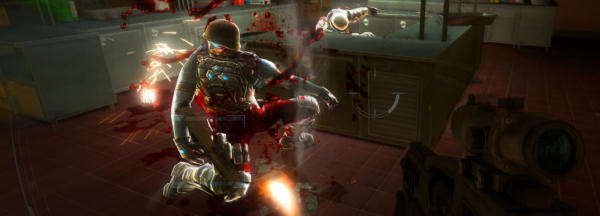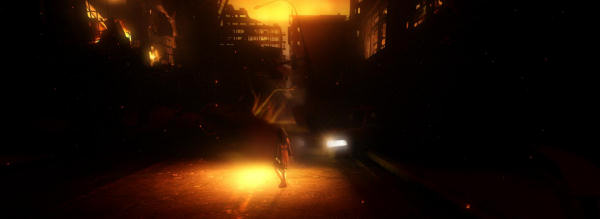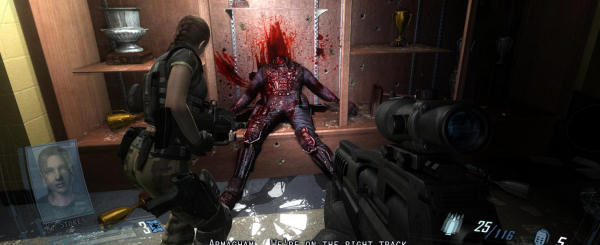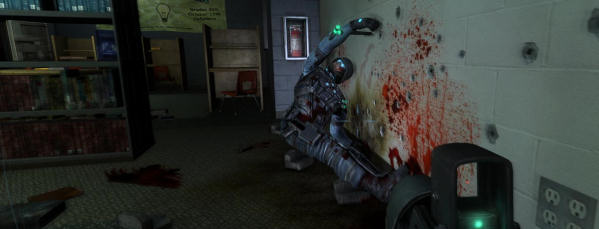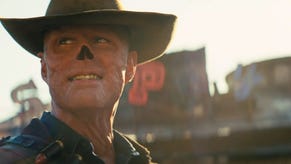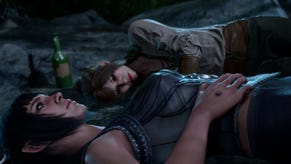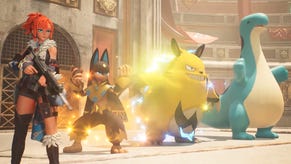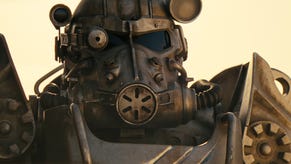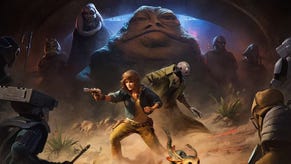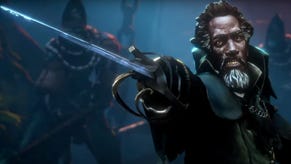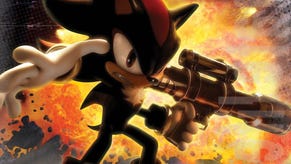Wot I Think: F.E.A.R. 2 Project Origin
Monolith's sequel to F.E.A.R., eventually called F.E.A.R. 2: Project Origin, came out last week. Alma's back, messing with our heads, disturbing our telekinetic fields. Was it worth the scrabble to recover the name from Vivendi? Here's wot I think.
I have come to the conclusion that FEAR 2 is about the importance of team communication. When one of your team mates radios to you that they’re off to investigate the sound of the crying woman – the same crying woman who’s tried to kill you in psychic attacks for most of that day – you’d think, maybe, you’d give him a heads-up. Not remain completely mute, waiting for the inevitable cries of pain to be broadcast back to you. In FEAR 2, the guy you play is a bit of a dick.
It is, in so many ways, an incredibly traditional first-person shooter. And as is the way of traditions, it’s safely familiar territory, but an experience you’ve maybe had once too often. It’s Christmas with your comfortably predictable, sometimes dull family. Except with perhaps slightly more viscera.
Rather nicely, Project Origin picks up the story half an hour before the end of FEAR. Playing Delta Force operative Michael Becket, you and your team are tasked with arresting Genevieve Aristide, the president of Armacham – the corporation behind all the evil psychic projects that made up the story of the first game. And indeed the people who had imprisoned Alma, the apparent little girl who haunted you throughout. Aristide soon escapes you, and through a series of events, you’re in a hospital, having received some sort of dodgy treatment that’s improved your psychic powers.
Of course what this all boils down to is shooting at the enemies, then running into the next corridor/room, and shooting at the enemies. Along the way you’ll be psychically disturbed, dragged into hallucinations, and rather peculiarly, occasionally forced to hammer the right mouse button to stop Alma from throttling you to death. And of course you’ve got bullet time. Beyond the completely batshit bonkers inclusion of two giant mech suit sequences, there’s nothing that stands out about the mechanics. In fact, what’s most peculiar about a game inspired by J-Horror spooks, is the astonishing amount of time it’s just yet another soldier shooter.
There’s all sorts of mystery about your team, your abilities, and who is why and where for when, told out through cutscenes and bits of information left lying around the levels, and there’s no need to spoil them here. But of course the larger story is that of Alma, who is released from her imprisonment near the beginning of the game, and messing with your head from the off. Oh, and then there’s the backstory to Armacham. And the story about the training facility. And the mysterious Snake Fist… FEAR 2 is a game that is in no way short of story, telling it in every imaginable way, occasionally effectively.
The primary school that makes up the game’s finest section is packed with little hints on the walls, notes in classrooms and so on, that satisfyingly unfold the farther you delve into the building’s secrets. But none of it feels forced upon you – there’s a sense of discovering it through your own thoroughness. However, this isn’t the case throughout, with great chunks of the information discovered on discarded, apparently “top secret” bits of data, lying around on the floor of vast, industrial complexes. It’s a little incongruous. The story overall, when reflected upon, just doesn’t add up to much. “Oh,” you’ll say. “So that did that, then. Oh, if you like.”
This back and forth, decent ideas and desperately hoary tropes, exemplifies the experience of FEAR 2. Technically, it’s extremely accomplished. The enemy AI lets it not only find cover, but also create it, tipping over objects, flipping tables, and hiding behind them. (You can do the same, but frustratingly only on pre-determined objects. One bookcase tips over, probably discovered after a firefight. Another, right before the next bullet exchange, does not.) The music is cleverly woven into the action, reacting in time to events, spiking the shocks, and generating tension. The visual effects are frenetic and varied, each associated to particular phenomena you encounter. The flashes of Alma appearing in rooms, on monitors, in shadows, and so on are fantastic. The poltergeist effects make you jump, as objects topple over, doors fly open, bodies get dragged rapidly away. All of this is true… for the first couple of hours.
For the first hour or two I was jumping like a big idiot. At one point I was so engrossed that just the sudden appearance of a couple of soldiers had me firing my gun wildly at the ceiling before I’d gotten a hold of myself. But a few hours of tedious grey corridors and I was immune to it all. The opening sequences seem like a vaccine that prevents you from being effected by much of the game.
You learn how it works, and at that point it stops working. The musical cues eventually are so familiar they warn you of a surprise, rather than aiding one. The flashes of Alma become so predictable that I started saying hello to her. “Oh, hi Alma. How’s it going? Not sticking around?” The enemy AI reliably hides behind the object, so you know you can wait to get your shot. And the screen going black and white means your heart sinks as there’s going to be another tedious section in the dark with ghost pecking at your armour like a slightly cross chaffinch.
The two large sections that succeed are the hospital and the primary school. Both are real-world settings that are twisted by the actions of Alma, the enemy ATC soldiers, and Armacham. Here the game thrives, splashing colour and familiar signs that usually represent safety, and making them dangerous, terrible places. The secret to all good horror. Both, everywhere in the game, are tight, one-way corridors, but the nature of both buildings makes this feel reasonable. It’s a little contrived with piles of furniture blocking passages, and the number of barricaded doors is remarkable, but you can believe that panicked staff and pupils had done this at some point in the past. These bright, airy locations become effectively upsetting when things get messed up. The same cannot be said for the miles and miles of grey, metallic corridors and chambers, or dull, beige passages, that bulk out most of the rest of the game.
There’s little opportunity to play smart. Equipped with a sniper rifle (all the weapons are satisfying to fire, but it’s deeply unsatisfying to see their laboured effectiveness when shot repeatedly into the face of the same soldier), you might crouch before the entrance to a large chamber, knowing it will be filled with guards. Pick off a few before you go in? No. Because their existence won’t be triggered until you’ve crossed that boundary. Eventually you start playing up to this, working out which action will generate the next wave. You reload your weapons and maybe use a medkit before going over to that crate with the ammo, which will certainly trigger their entrance. You can game it further, throwing proximity mines over to where the enemies will inevitably appear.
The firefights against the troops or Armacham's Replica soldiers are fun enough. (It's important to note that for most of the game, I wasn't aware which of the two I was fighting - it never seemed important, unless they were shooting at each other). The slo-mo Reflex Time makes fights a degree more engaging, letting you take out multiple opponents before ducking back behind cover, with bullet tracers everywhere and globules of blood floating about. But you don’t often need to use it. It became something I kept forgetting I had, pulled out only in emergencies. But what's especially strange about these extended sections is the game apparently forgetting it's a horror. It's all gone, for ages and ages, everything so overwhelmingly ordinary.
(Behind the scenes note: I'm editing this paragraph in a few minutes after thinking I'd finished the review.) The melee combat that was a big part of the popularity of FEAR is here too. You can use the butt of any weapon to bash enemies, and if jumping you'll deliver a kick. And if in Reflex Time, sprinting or jumping toward bads will polish them off in a slick move. Except, well, I forgot to even mention it when discussing the game. There's rarely a moment you'd ever need to use it, and fewer you'd want to. It's clumsy, and almost never necessary.
The shooting becomes significantly less fun, however, when fighting the frenetic, spasmodic experimental beasties that appear now and then. They’re effectively dispatched with a shotgun, but they’re a tiresome delay in progress, especially in one particular scene filled with them, that the game forces you to go through three times. By the later stages they’ve become invisible too, and since they don’t drop ammo, they can piss right off. But they’re still more fun than the damned ghosts.
There’s fantastic dollops of gore throughout. Revolting corpses festering in hallways, bodies exploding into bits, ripping in half, or having their heads pop off as you shoot at them. The dart gun lets you pin enemies to walls, resulting in some superbly gruesome poses, and this is never more satisfying than when it’s one of the annoying, wall-running, flitting beasts. “Stay there!” There’s no questioning that FEAR 2 does the job of being a first-person shooter.
But what it doesn’t do is stand out. The spooky effects were innovative and inspired in FEAR. They’ve been copied a lot since, but they’d still grow stale this time out if it were the first time anyone had thought to try them. As alluded to earlier, the only significantly original ingredient are the brief mech sections, in which you stomp through the post-explosion city streets in a giant robot suit, blasting everything to catastrophic bits. And sure, they’re a bunch of fun. But they’ve got absolutely nothing to do with anything, and feel ludicrously out of place.
Monolith are still strong game developers, and it seems from the enormous amount of silliness hidden through the game (the resuscitation instructions on the wall of a room in which you’re stupidly trapped, fighting off wave after wave of enemies, almost make up for the laziness of that scene’s design) that the spirit that made No One Lives Forever might like to come out again. It’s trapped in a dull, metallic world of po-faced special forces soldiers and attempts at significance. But you’re still manning a turret here, and taking out the snipers over there. It so often feels like they’re going through the motions, rather than scaring the motions through us.
And we’ll talk about the ending once everyone’s got there.



